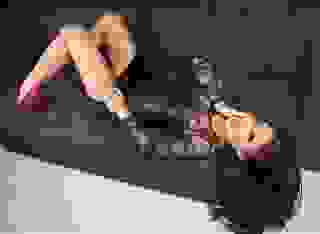- Illustrated Poetry
- Drift
- Comments
All Comments on 'Drift'
by Lauren Hynde
- 7 Comments
I remember this photo from a while back and these words so hauntingly fit.
For anyone who has ever spent time in the dunes near an ocean this will bring back placid lovely memories. I just had a delight flashback. Thank you, Lauren
I prefer to be. This is perfect, Lauren. Placid and contemplative. where did you take the pic? It reminds me of a place I love...
...the sense of perfect peace of mind drifting unimpeded. Lovely, Laren.
Tess - thoughtful
I’ll confess. It is sort of a momentous event for me when both the verbal part and the visual part are successfully integrated to create a synergistic effect. when the synergy works it creates a much richer and more nuanced work. IMO It happens in “Drift”.
Taking the poem as if it’s simply an illustrated text to the visual, would prove difficult as the wooden stairs are indeed “no one”. Relating to it as having no name house and a city is more of an urging to continue the search than a rest stop. Clearly, attributing the qualities of being one (or not) and having “a name a house a city”, and later sitting and contemplating fit a human addressee. In that context we could take the beach path viewing the ocean as an extended image describing the implied addressee. She could be either the narrator herself or any other person; maybe even an appeal to a common experience of all the readers.
But there is more. The synergistic effect works both ways. The addressee can’t be simply a human, at least not yet. The repeated claims in the poem: “as if”, pre supposes the proposition: ‘but you are not’. At the second stanza the narrator denies the possibility that the stairs were simply: “a root growing in the sun”, thus granting it both the quality of a drifter and by the very act of adrresing it she also anthropomorphizes the object. Later on, the attribution of human qualities is clear (the verbs sit and contemplate). My claim is that the synergistic (and the esthetic) effect is of a human observer, being in an observing mood who perceives at least at those moments of meditation, both the stairs and him/herself as sharing some qualities. The commonality is expressed both linguistically in refereeing to each other by mutual attribution of qualities (metaphors to each others), and by the impact of their spatial proximity (maybe now observing and earlier sitting next or on the stairs) as Metonyms.
No doubt, the human observer could feel at the moment small or disconnected from a permanent address and particular locality, and in the broad perspective could take into account the past and the future of inevitable dynamics of even what seems to be static and relatively stable. Indeed we are all drifting elements on earth. An even stronger case of all that is transient is overtly emphasized in: “In time”.
Thank you for this experience.
This poem was mentioned in the Archival Review thread, in a picking through Lit's archive of over 35,500 poems.
----------














